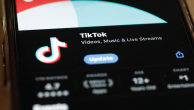Results for this survey are based on telephone interviews conducted under the direction of Princeton Survey Research Associates International among a nationwide sample of 3,615 adults, 18 years of age or older from April 30 to June 1, 2008 (2,802 respondents were interviewed on a landline telephone, and 813 were interviewed on a cell phone, including 269 who had no landline telephone). Both the landline and cell phone samples were provided by Survey Sampling International.
The combined landline and cell phone data were weighted using demographic weighting parameters derived from the March 2007 Census Bureau’s Current Population Survey, along with an estimate of current patterns of telephone status in the U.S. derived from the 2007 National Health Interview Survey, using an iterative technique that simultaneously balances the distributions of all weighting parameters. The weighting procedure also accounted for the fact that respondents with both landline and cell phones had a greater probability of being included in the sample.
The following table shows the error attributable to sampling that would be expected at the 95% level of confidence for different groups in the survey:

Results for May 2008 Political/Believability Survey reported in Section 7 are based on telephone interviews conducted under the direction of Princeton Survey Research Associates International among a nationwide sample of 1,505 adults, 18 years of age or older, from May 21-25, 2008. The following table shows the error attributable to sampling that would be expected at the 95% level of confidence for different groups in the survey.Note that each respondent was asked to rate the believability of only 15 of the 22 print and broadcast sources included in the survey.

In addition to sampling error, one should bear in mind that question wording and practical difficulties in conducting surveys can introduce error or bias into the findings of opinion polls.




